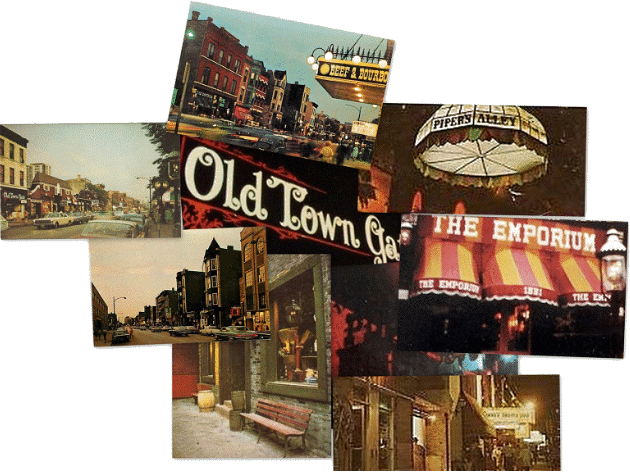BijouBlog
Snapshots of Old Town Chicago in the 1970s
When the Bijou Theater opened its doors in the Old Town neighborhood of Chicago 46 years ago, let's just say that area was pretty much the Haight-Asbury of Chicago. Think hippies. Head shops. Art house cinemas. Think, according to one nostalgic online poster, a place where one might (and it did happen) actually see a woman walking a goat down the street. Now, some claim that by 1970s its glory hippie days were over, but the gay places, including the new Bijou Theater and a bar called Glory Hole (self-explanatory) were glorying (literally) in the newly liberated gay sexual revolution (think lines of guys waiting to get in). Old Town, always raw and raunchy and funky, was becoming the gayborhood.
Now, some claim that by 1970s its glory hippie days were over, but the gay places, including the new Bijou Theater and a bar called Glory Hole (self-explanatory) were glorying (literally) in the newly liberated gay sexual revolution (think lines of guys waiting to get in). Old Town, always raw and raunchy and funky, was becoming the gayborhood.
This new gayborhood was still the home of what are now legendary Old Town places.
This article pretty much says it all:
Chances R (1528 N.; occupied today by O`Brien`s Restaurant). The old saloon and hamburger joint was said to have started the Wells Street revival when it opened back in the early `60s. Customers were encouraged to toss their peanut shells on the floor. The restaurant`s name reflected the uncertainty of the location. ``Chances are we could go broke,`` the owners reportedly said among themselves.
Ripley`s Believe It or Not Museum (1500 N.). Ripley, which opened in 1968, was part of a chain of international Ripley`s museums. The Chicago branch contained 13 galleries, including the circus room with its various freaks and mutations as well as replicas of Cleopatra`s barge, of a man who lived to be 160 years old and of a mummified monk. The museum closed in 1987 and auctioned off its exhibits.
London Royal Wax Museum (1419 N.). Another popular stop along Wells, the museum included lifelike figures of Chicagoans Ernie Banks, Hugh Hefner and Al Capone. The dungeon featured replicas of Dracula, the Wolf Man and Frankenstein while the fantasy room contained Pinocchio, Cinderella, Rip Van Winkle and Alice in Wonderland.
The Earl of Old Town (1615 N.). The fabled club that came to epitomize the Chicago folk scene and honed such home-grown talent as Steve Goodman, John Prine and Bonnie Koloc opened in 1962. Owner Earl Pionke didn`t introduce music, however, until 1966.
In 1951, free spirit Slim Brundage established the College of Complexes at 1651 N. Wells St. Inspired by the legendary Dill Pickle Club of the `20s, the College of Complexes was part coffeehouse, part lecture hall and part speakeasy. During the `60s Pipers Alley (1608 N. Wells), which opened in 1965, was Chicago`s answer to London`s Carnaby Street. A giant Tiffany lamp hung outside the entrance to the maze of unusual retail shops that had names like the Bratskeller, Bustopher Jones boutique, the Peace Pipe, ``In`` Sanity, the Glass Unicorne, Jack B. Nimble Candle Shop, Volume I Book Shop and Flypped Disc Record Shop. Customers walked down a brick alley lined with antique lamps.
During the `60s Pipers Alley (1608 N. Wells), which opened in 1965, was Chicago`s answer to London`s Carnaby Street. A giant Tiffany lamp hung outside the entrance to the maze of unusual retail shops that had names like the Bratskeller, Bustopher Jones boutique, the Peace Pipe, ``In`` Sanity, the Glass Unicorne, Jack B. Nimble Candle Shop, Volume I Book Shop and Flypped Disc Record Shop. Customers walked down a brick alley lined with antique lamps.
Now more a playground for clean-cut tourists and inhabitants of expensive dwellings around the area, Old Town succumbed to gentrification. Some might claim it came back after a decline in the eighties, but its material prosperity lacks that unique funky edge that made it what it is.
When you subscribe to the blog, we will send you an e-mail when there are new updates on the site so you wouldn't miss them.

Comments